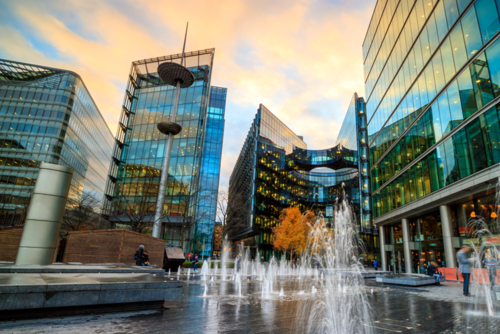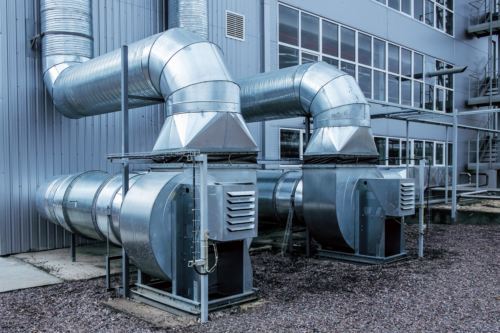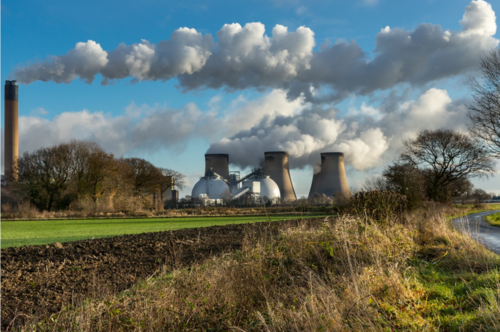How does air quality affect the workplace?
Lower productivity
Research shows that poor air quality in workplaces can have a significant negative impact on the cognitive functioning of employees, including slower response times and the ability to focus, adversely affecting productivity.
A double-blind study from the Harvard School of Public Health shows that people working in well ventilated offices with low levels of pollutants have double the cognitive function of those in offices with average levels of exactly the same pollutants.
Another one-year study, which included participants in offices across six countries working in a variety of fields, including engineering, real estate investment, architecture, and technology, found that increased concentrations of fine particulate matter (PM2.5) and lower ventilation rates, measured using carbon dioxide (CO2) levels, were associated with slower response times and reduced accuracy on a series of cognitive tests. Researchers noted impaired cognitive function at concentrations of PM2.5 and CO2 that are common in indoor environments today.
“In an average size meeting room without adequate ventilation, three people can cause CO2 to reach a level that affects their cognitive function in just 45 minutes.”
People who work indoors may be exposed to a higher level of particulate matter. This is especially likely in workplaces and offices with poor ventilation systems, as these particles can become trapped indoors with no way to leave. Once they’re inhaled, they can cause illnesses like asthma, COPD, coronary heart disease, stroke, and lung cancer. There is also evidence that links PM2.5 to low birth weight, diabetes and diseases such as Alzheimer’s and Parkinson’s. And, it has been proven that PM2.5 can cross from the lungs into the bloodstream and subsequently able to damage every organ in the body.
Better ventilation and filtration in workplaces to help prevent the transmission of viruses has the additional benefits of better cognitive functioning and productivity of employees, making healthy buildings key to public health and business strategy moving forward.
High absenteeism
We spend 90 percent of our lives indoors where air pollution can be up to five times more polluted than that outdoors. Indoor air quality and comfort are not often seen as basic cornerstones of wellness, because they’re out of sight, out of mind. However, the side effects of poor air quality can have a profound impact on a company’s bottom line. A recent report conducted by the Confederation of British Industry (CBI) found that air pollution causes three million lost working days each year in the UK.
The report found that work absences alone related to poor air were costing Britain about £600m a year, due to people missing work from poor health caused by air pollution.
So, it’s in an organisation’s best interests to ensure that indoor workspaces have clean, healthy air for employees to breathe. Currently, over a working lifetime, British employees will have nearly three months off sick, a total of 94 days.
Is it possible to increase ventilation whilst improving energy efficiency and reducing emissions?
So, it’s in an organisation’s best interests to ensure that indoor workspaces have clean, healthy air for employees to breathe. Currently, over a working lifetime, British employees will have nearly three months off sick, a total of 94 days.
Building owners are under pressure to address poor indoor air quality by increasing ventilation, whilst actively lowering energy usage to meet ambitious emission targets.
From 1st April 2023, Minimum Energy Efficiency Standards (MEES) Regulations will make it unlawful for landlords to let a commercial property not meeting the energy efficiency requirements, and also unlawful to continue letting a commercial property without improving the property’s energy efficiency to at least an E EPC (Energy Performance Certificate) rating. Landlords should also be aware that a minimum rating of EPC B will be required by 2030 and there is a newly proposed interim milestone of a minimum C rating by 2027.
Research shows that buildings account for around 40 percent of total energy use. The operational phase of a building's energy use is mainly depicted by heating, ventilation, air conditioning (HVAC), lighting, and appliances. The building's energy demand is greatly influenced by the climatic conditions and its use of HVAC systems that account for a significant proportion of a building's energy consumption, especially in hot, humid climates where it can account for more than 70 percent of total electricity consumption.
In addition, recent soaring energy prices have put running costs at the top of the agenda for most UK businesses, especially owners and managers of large commercial or public buildings. Reducing energy will save building owners money and help them improve their EPC rating which has now been enshrined in law.
The key tool that commercial real estate needs to embrace to overcome this global challenge is the informed, strategic use of building data.
By using sensors to monitor room occupancy, temperature and CO2 levels, building management systems can make real-time decisions to make energy efficiency savings by reducing energy consumption in unoccupied areas. In addition, the BMS also ensures the correct temperature and air flow in occupied areas of the building, keeping it compliant with new regulations and reducing the risk of virus transmission.
By optimising mechanical ventilation in this way, adequate levels of filtered outdoor air is ensured throughout the building, diluting stale indoor air and so reducing the risk of sickness, long term health conditions and the transmission of viruses. In addition, absenteeism can be reduced, and the feeling of wellness and productivity increased. The system can also make significant energy savings and a rapid return on investment, whilst reducing carbon emissions.
As published in Air Quality News
Latest Articles
How the Internet of Things (IoT) is revolutionising building energy efficiency
Read More >Choosing the right green building certification
Read More >How AI technology is helping reduce energy consumption and carbon emissions in commercial real estate
Read More >What will be the response to spiralling energy prices and will it benefit or harm air quality
Read More >



